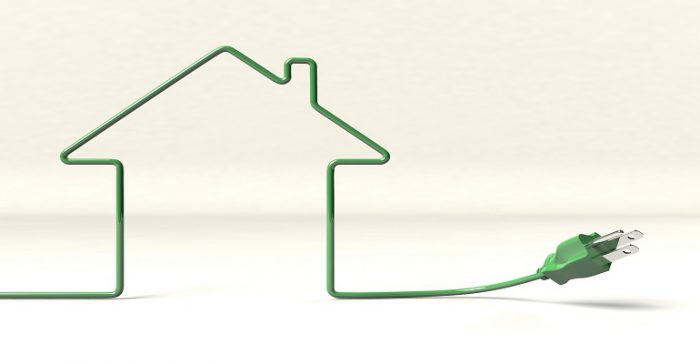Duke Energy
Saving energy at home is easy. Keep reading to learn about time-tested tips and energy-saving choices for reducing your home energy consumption.
Cooling
- Switch your ceiling fan to turn in a counter-clockwise direction In the summer; in the winter, run it at low speed, but clockwise. Install more ceiling fans because the breeze of a fan can make you feel three to four degrees cooler, you can raise that thermostat and still stay comfortable.
- Decorate for a cooler home by hanging light-colored curtains that allow light to enter a room while blocking some of the sun’s rays, and light-colored paint to reflect heat.
- Close unused air vents. If you have central AC you can close air vent in rooms you’re not using so you’re not paying to cool them.
- Plant trees to provide shade on the sunny side of your home.
- Install a programmable thermostat to adjust your temperature during the day.
Heating
- Cover all bare floors. Carpeting or rugs add to comfort and heat retention, especially if there is little or no floor insulation.
- Raise the temperature slowly to keep your bill lower. Quickly raising your heat pump’s temperature activates the heat strip, which uses tons of energy.
- Close the flue in your fireplace and install glass doors to keep in the warm air.
- Keep your thermostat close to the outside temperature – it’s cheaper to keep your home at 70°F when it’s 50°F outside than when it’s 30°F.
- Don’t block air vents with drapes and furniture.
- Change the filters in your heating system every month for optimum efficiency.
- Give your air compressor space to work efficiently. Never stack anything against your HVAC or drape anything over it.
- Set your thermostat to 60 degrees if going on vacation during the winter months, but don’t turn it off.
- Heat your home with the sun’s help. Leave window shades or blinds open during the daytime. And consider using solar heat to supplement your normal heating source.
- Lower your thermostat every time you leave the house.
Lighting
- Use the right bulb. Make sure you’re using the appropriate LED bulb for your light fixture – they come in various sizes and types for different lighting needs.
- Replace halogen light bulbs, which can get hot enough to be a fire hazard, with CFL and LED – they use less energy and don’t get as hot.
- Use motion-detector lights for all your outdoor lighting – they’re convenient and efficient.
- Replace your five most-used light fixtures and/or bulbs with ENERGY STAR® products. If every American did so, we would save about $8 billion per year in energy costs.
- Consider using timers to turn lights on in the morning and off during the day.
Appliances
- Use microwaves and toaster ovens to cook or warm leftovers. You’ll use less energy than cooking with a conventional oven.
- Pull the plug on that second fridge located in the hot garage or utility room.
- Dust your fridge the next time you dust your house. Check the coils behind the refrigerator — and use coil vacuums or dusters to clean it off and keep costs down.
- Keep your freezer full – it uses less energy than an empty one. For maximum savings, consider filling your freezer with gallon containers of water.
- Wash and dry several loads at once, so that your dryer isn’t completely cooled down when it heats up for the next load. Avoid over-drying your clothes because it wastes energy, plus causes static and wrinkling.
Electronics
- Plug electronics into a power strip, then turn the strip off when not in use to save in energy costs.
- Avoid energy vampires. Even when they’re turned off, home electronics in “standby” mode use energy to power features like clock displays.
- Look for ENERGY STAR-qualified TVs – they’re up to 30 percent more efficient than noncertified models.
- Set your computer to sleep or hibernate mode instead of using a screen saver so it uses less electricity during periods of inactivity.
- Unplug battery chargers when the batteries are fully charged or the chargers are not in use. Many chargers draw power continuously, even when the device is not plugged into the charger.
